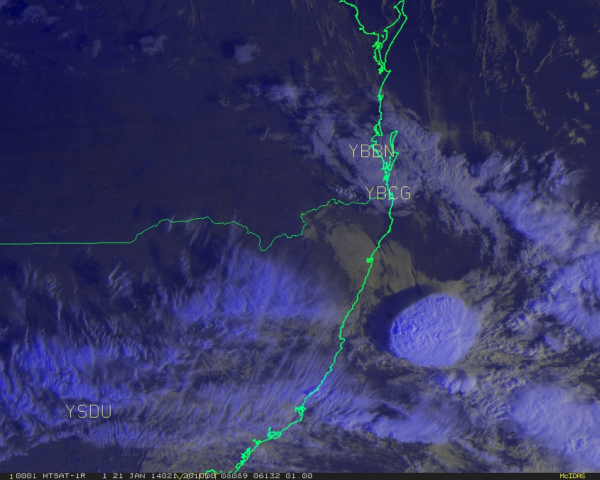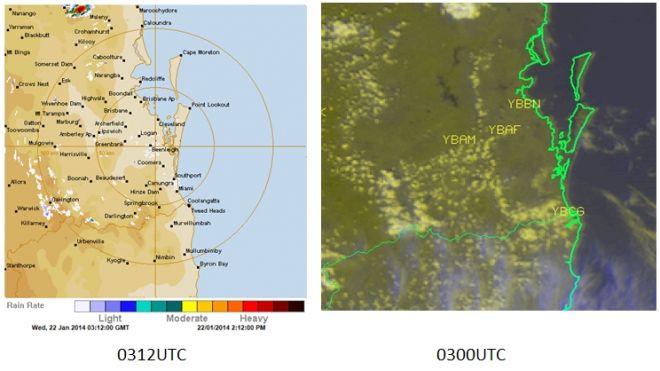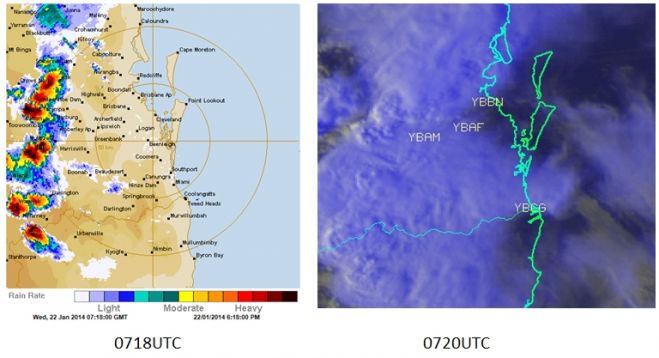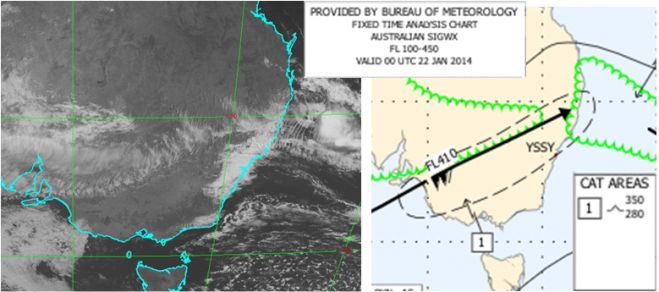
Thunderstorms and upper atmospheric turbulence, MTSAT-1R rapid scan imagery, eastern Australia 22nd January 2014
(animation courtesy Japan Meteorological Agency (JMA) / Australian Bureau of Meteorology (BOM))
MTSAT-1R 10 minute rapid scan VIS/IR RGB product, southeast Queensland and northeastern New South Wales. Brisbane (YBBN), Coolangatta (YBCG) and Dubbo (YSDU) are annotated.
- This case study shows how thunderstorm development over the maritime region (Tasman Sea) during the early morning can be nowcast in the 10 minute MTSAT-1R satellite data by monitoring the overshooting tops.
- Thunderstorm development over land during the day is also shown by the development of cumulus, especially the clumping of cumulus and towering cumulus cloud. This post shows that this cloud development can be seen in satellite imagery before any significant precipitation signatures appear in the RADAR imagery. In this case the thunderstorms inland and to the southwest of Brisbane (YBBN) resulted in severe weather. This included hail up to 3 cm at Stanthorpe and Mutdapilly and heavy rainfall with associated flash-flooding near Gatton.
- The 10 minute rapid scan satellite data also permits the monitoring of transverse cirrus banding associated with the Subtropical Jet. This banding can sometimes correspond to significant upper air turbulence as shown in this post.
The below images show the RADAR and the corresponding MTSAT-1R rapid scan image just prior to the appearance of the first significant RADAR reflectivity signal from the BoM Brisbane site IDR663 after 03UTC. The actual time is 0318UTC which is when the Forecaster will have received the data (note that there is a delay of 6 minutes in the receipt of the RADAR data and 16 minutes in the receipt of the rapid scan MTSAT-1R satellite data). (radar image courtesy BOM, satellite image courtesy JMA/BOM)
The below images show the RADAR and corresponding MTSAT-1R satellite image at the time when the storm was at its most developed. (radar image courtesy BOM, satellite image courtesy JMA/BOM)
The below images show the 00UTC BNOC SIGWX chart of the 22nd January 2014 of south-eastern Australia with the location of turbulence indicated. Also shown is the MTSAT-1R rapid scan image of the same time. (satellite image courtesy JMA/BOM, SIGWX image courtesy BOM)
It appears that the "transverse banding" in the cirrus cloud corresponds to areas of moderate turbulence. Note also the location of the jet exit region and its relation to the region of convection in the northern Tasman Sea.



